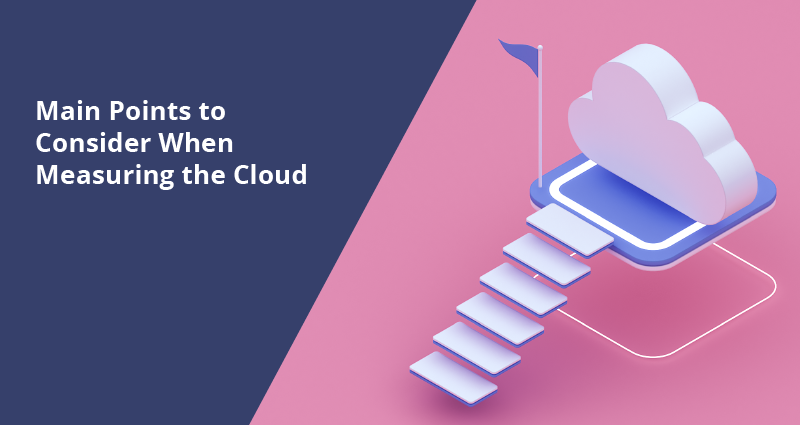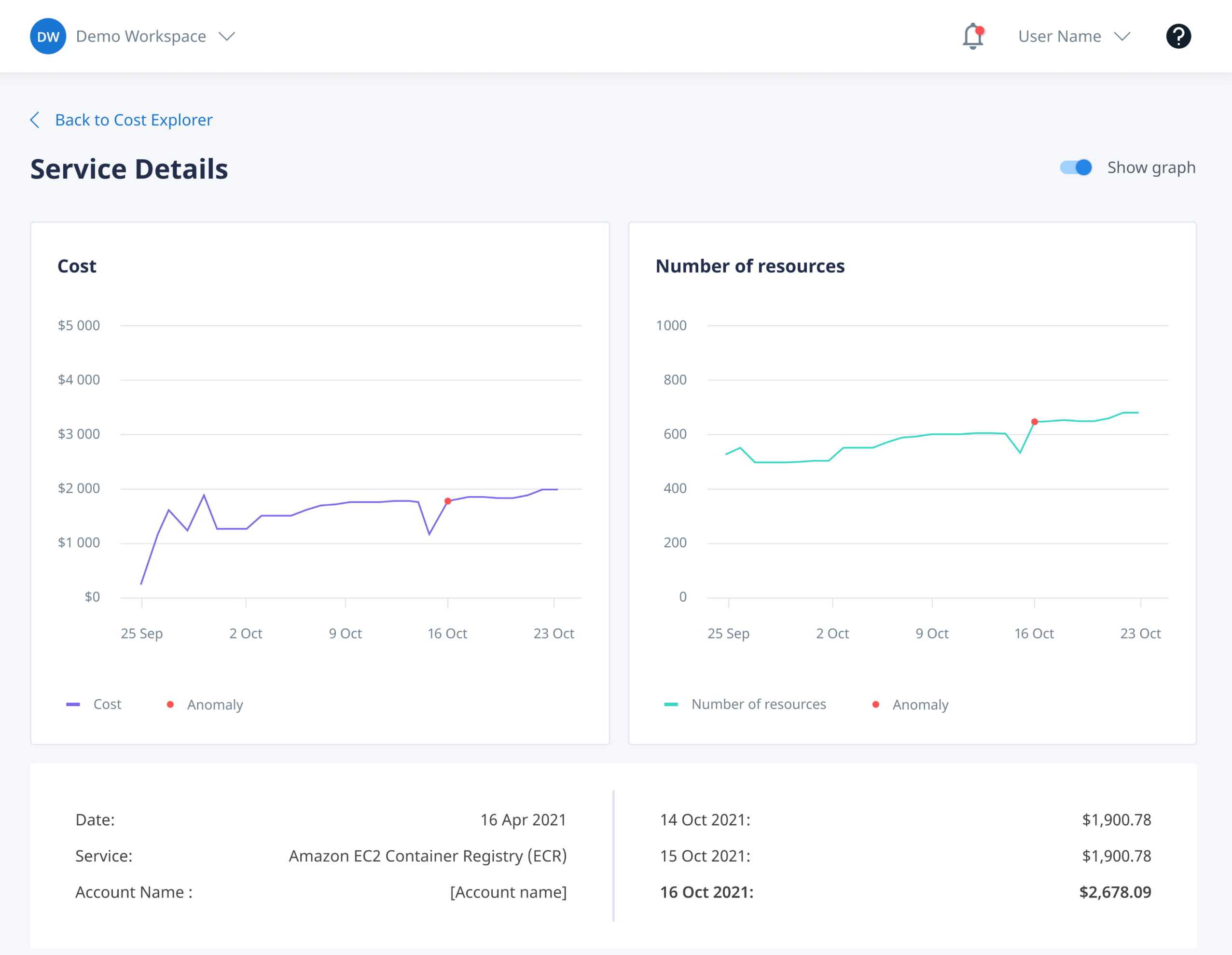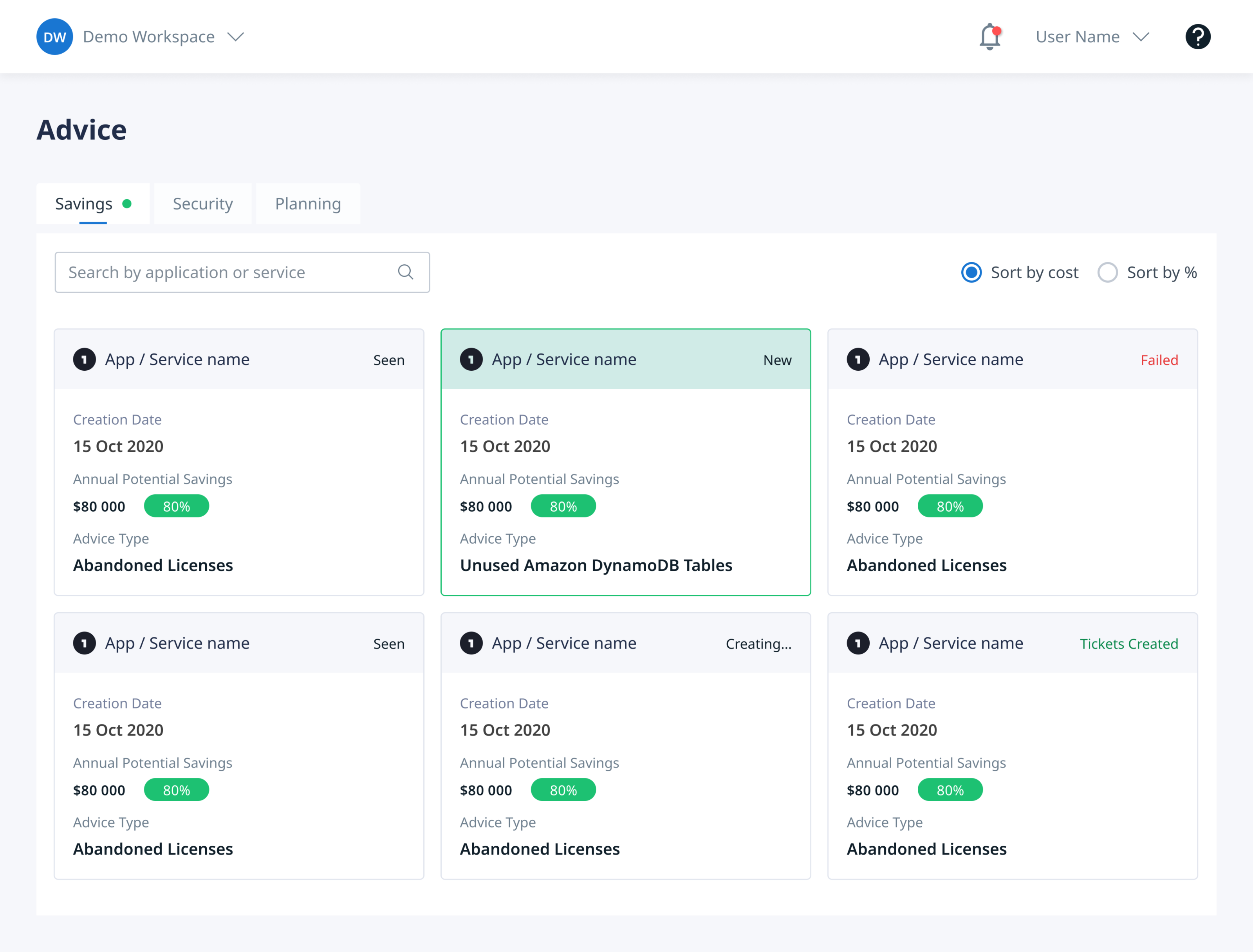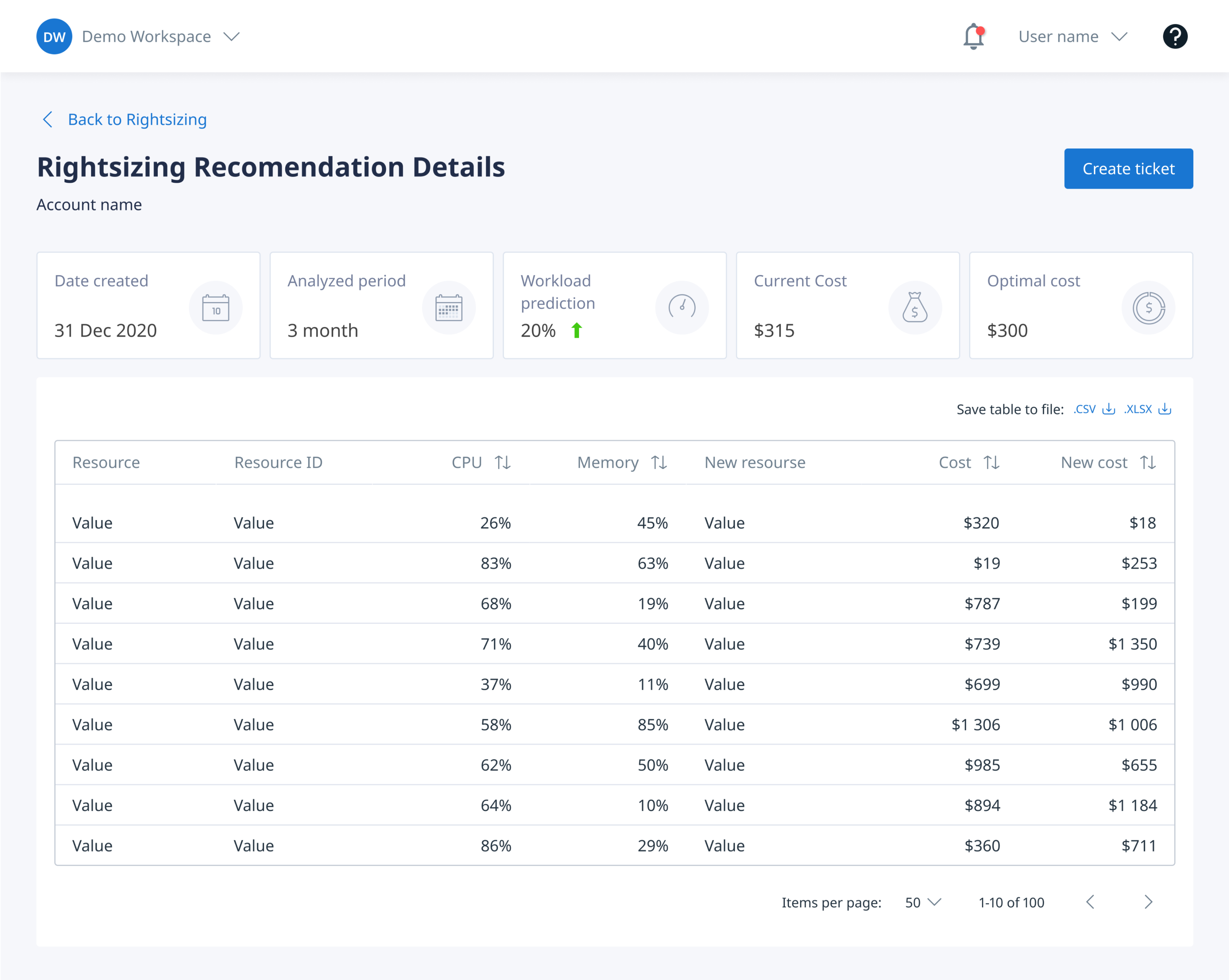
Following cloud trends and keeping up with the benefits it offers is a good thing to do but you always have to think about at which cost. Businesses should constantly consider the points to measure cloud success and think of further strategic moves and ways to improve this experience.
It’s not that obvious but essential to find a tool that evaluates the benefits that the cloud brings for the company. Not only it helps to decide whether all this cloud migration idea is worth it, but it also can encourage your team members to start using new technology with open minds and hearts.
No matter what cloud management strategy has been chosen – cloud management platform deployment or native tools usage – there are several ways to measure the productivity and wellbeing of your cloud infrastructure as a whole.
One of the possible options is to create the Cloud Center of Excellence (CCoE) that takes full responsibility for working with the cloud and starts tracking the cloud Key Performance Indicators (KPI’s). The CCoE team can help the organization monitor and manage cloud costs and resources utilization rates in a more effective way. Below we consider the notion of Cloud Center of Excellence.
Cloud Center of Excellence
A Cloud Center of Excellence is a team of specialists who are in charge of various cloud processes: migration, adoption, operations, and management. This unit can be also called Cloud Competency Center or Cloud Knowledge Center.
The CCoE is tasked to implement the cloud strategy and best practices that transform the way the company uses the cloud. It presents the points to consider when assessing your cloud journey success and gives you the opportunity to see whether you get the most out of your cloud investment.
There are 2 types of factors that business owners should pay attention to for evaluating overall cloud performance:
Financial, that can be measured in monetary terms;
Business ones that include strategy and performance parameters.
We will start with the financial ones.
Financial Points to Measure Cloud
The main goal of cloud deployment lies in the improvement of the general effectiveness of the company’s performance. But what else should be considered?
We suggest starting from finding out the cost of deploying cloud architecture, namely:
The cost of running on-premises data center (and comparing it to the cloud environment);
Cost of cloud migration;
Operational costs;
If the cloud is profitable.
It helps to compare spendings on cloud and on-prem software to see what is more beneficial: to invest in traditional IT or start deploying cloud environments, or both.

On-Premises Costs
A move to the cloud is usually going alongside changing a CAPEX (Capital expenditures) financial model to OPEX (Operating expenses) to see whether the cloud is more profitable for your organization. To compare your cloud cost with the on-premises one, you need to convert the total cost of ownership of the data center into an operating cost. There are several parameters to think of below:
Cost of on-premises hardware: How much money is usually spent on servers and networking? Compare this cost for your company to the monthly and annual costs of the cloud deployment.
The lifespan of hardware: You need to think about the frequency of your IT infrastructure renovation. This allows you to calculate the monthly or yearly cost of purchasing the hardware.
Additional expenses: Keep in mind the cost of electricity, fire safety equipment, the server rooms rent, worker’s salary, and some other inevitable spendings.
Innovations: The cloud helps companies to cut down the operational costs of running on-premises IT. This gives way for innovations and allows your IT team to focus more on creative tasks and development.
Cloud Migration Costs
These points will help business owners to translate on-premises costs into cloud operating costs. So, if you’re planning to kill two birds with one stone and continue hosting applications in-house as well as use the cloud, don’t forget about development, management, and recruitment costs.
Applications rearchitecting: How much does the app’s redesign cost? Rehosting applications to get them running in the cloud involves reconfiguring them for the new cloud environment. As it takes more time and effort, it’s more expensive than the application’s initial cost – this fact is worth considering.
Management time: Compare the time management cost of on-premises and cloud architecture to realize how much money is spent on planning the IT budget and strategic development moves.
Cost of training: Consider the spending on training staff to work with the new systems and technologies, as well as hiring new specialists, which includes the searching process, interviewing, onboarding, salary, equipment, etc.
Cloud Operating Costs
One of your primary concerns for companies is to lower operational costs. This goal can be reached with the help of constant monitoring, analyzing, and optimizing cloud expenses. Here are some factors for you to pay attention to:
Monthly cloud bills: In a perfect world, forecasted costs align with real ones. Unfortunately, it’s not so common, so business owners should consider cost optimization strategies to reduce their cloud bills.
Third-party tools costs: How much do the third-party services cost? They should demonstrate the savings opportunity and help you make decisions concerning the cloud architecture deployment.
Energy costs: Even if you have recently moved from on-premises to the cloud, you still need to pay for the electricity. However, the sum should be significantly lower, as you don’t have servers in your company’s building anymore (or have less).
Budget alignment: Track your cloud cost and find out whether it matches your company’s budget or not.
Cloud Profitability
It’s good to know that your effort paid off. To evaluate the worth of cloud investments observe the points that will help you identify the profit from cloud computing deployment.
Customer growth: This factor should give you oversight on sales growth and cloud implementation correlation.
Savings: How much money the cloud architecture saved for your company? Try to assess the general profit of cloud utilization.
Operating cash flow: Did you notice the increase in cash flow due to the switch from CAPEX to OPEX? Members of the finance team can and should answer this question. Moreover, this factor is recommended to be regularly checked in your company by CCoE experts, if there are some in the company.
Business Points to Measure Cloud
Consideration of financial factors is vital but it’s also beneficial to take into account other cloud aspects too. For instance, it may include better performance or agility that leads to business development in a long-term perspective.
In this section, we will talk about non-financial aspects connected to cloud management strategy and optimization of cloud architecture such as:
Cloud management;
Automation in the cloud and how it facilitates ongoing processes in the company;
Customer satisfaction;
Stakeholder buy-in and involvement.
These factors can give you a broader holistic view of your cloud environment. So, business measuring points in this case include:

Cloud Management
The cloud is scalable and that is one of the main advantages of this type of IT environment. However, many companies start suffering from uncontrolled cloud sprawl, as the scaling possibility of the cloud is infinite. A solid cloud management strategy is an indispensable condition of keeping cost and security stable.
Cloud visibility: Can you claim that you have total visibility over your cloud assets? Not only it concerns the finances of the company but also resources like capacity, storage, power, etc.
Cost optimization: Are you making the most of your cloud infrastructure? If you have unused and underutilized resources, find a way to easily detect and eliminate wasteful resources to optimize your cloud costs.
Cost allocation: Do you know which of the company’s departments is the most cost-effective? Cost allocation across teams, as well as chargeback and showback policies implementation brings more clarity and facilitates bills reducing processes.
Billing: Do you take full advantage of special offers or discounts like Reserved Instances? These practices may help you reduce your cloud bills.
Reporting: How does the reporting system work in the company? Is it accurate?
Compliance: Are you sure your company meets all regulatory standards for your industry? Compliance is a serious matter which goes hand in hand with security, so it’s recommended to not ignore it.
Automation in Cloud
Automation of all the processes if it’s safe for overall performance is recommended in cloud architecture. The reduction of manual workload may not only save your IT team members time for implementing more relevant tasks but also minimize the occurrence of human errors.
Resource optimization: Are you analyzing your past utilization rates to choose the right size of an instance when buying it? Can you scale them any time you need? Do you consider scheduling or do you need them up and running 24/7? Automation is recommended to perform these processes to simplify your life in the cloud.
Resource health: Is it possible for your company to automatically terminate unhealthy instances and adopt healthy ones?
Customer Satisfaction
By focusing on the development of your IT and cost optimization you can leave one factor unnoticed – how much your customers enjoy their interaction with your business?
Application latency: Did the situation with loading speed improve due to cloud migration or not?
Customer support: To cut down the number of support queries, provide your customers with all crucial information – create FAQ section on your website, form a knowledge base, write a guide, or manual.
Customer satisfaction rates: Do your customers give you positive feedback on service performance and effectiveness? Do they write reviews mentioning pleasant user and buyer experience? Are they coming back? (if the answer for all 3 questions is “YES”, you’re doing a great job! Keep going!).
Stakeholder Interest
Changes are threatening in most cases, so business owners should think about their staff attitude towards moving to the cloud. It’s vital to demonstrate the positive sides of cloud computing deployment and get everyone acquainted with your cloud migration plan.
Training: Do you provide your employees with all useful information? What kind of educational program did you prepare for them? This is a great point for your CCoE to start interacting with the teams across the company and inform them of various cloud processes.
Collaboration: Are the several tools, services, or knowledge shared across the staff in your company? CCoE should make it one of the highest priorities for more productive and well-organized work.
Stakeholder feedback: Do all the members of the company’s leadership have a full understanding of the cloud operations’ impact on the organization? It’s recommended to give your leadership team all the details concerning cloud migration, adoption, and ongoing processes.
How to Integrate These Recommendations in Your Company
We dived deeper into cloud journey experience and presented several factors that should be tracked by your CCoE. But what is the following step? What to do if the company doesn’t have CCoE? If it has one, how to facilitate all the processes and save money and time?
Third-party tools as cloud management platforms (CMPs) can monitor the utilization and costs of your applications, ensure compliance adherence, recommend how to reduce spendings, and provide better security of your cloud environment. Additionally, CMP can help you with reaching greater visibility to simplify the process of decision-making.
Cloud management platform Binadox can help companies to deal with all of these tasks, even in multi-cloud architecture:
Cost Explorer feature makes you consider the amount of money spent on various services and applications, taking into account if the resources are unused, idle, or underutilized;

The Advice section identifies the weak spots of your SaaS applications (like security issues or overspending) and gives you recommendations;

Rightsizing feature helps companies to track the instances consumption rates and allows to form rightsizing recommendations to increase or decrease instances size;

Try Binadox for the 14-day trial period for FREE and start deploying your cloud architecture to the fullest extent.





